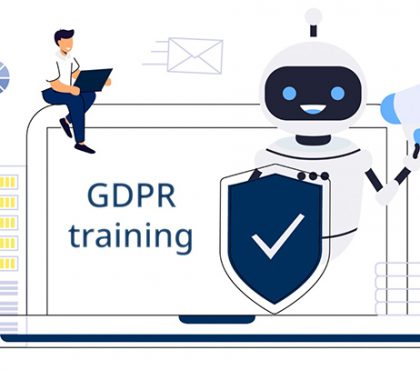Creating an effective compliance training plan is crucial for organizations to ensure adherence to legal regulations and industry standards. In 2025, the approach to developing such plans is to evolve to meet the dynamic compliance landscape. This article outlines 4 simple steps that will help organizations design a compliance training plan that not only meets regulatory requirements but also engages employees and fosters a culture of accountability.
What is Compliance training?
Compliance training is the process of training employees about the law, regulation, policy that applied at the company they work for. The training program depends on the characteristics of each company and the domain of their work.
4 Easy Steps to Develop a Compliance Training Plan
Here is a 4-step tutorial you may use as a reference:
1. Identify The Training Goals And Requirements of Your Company
It is better if you are clear about why you have to create this compliance training strategy, how it will work for the good of the company, and what should be the value to be transferred to the employees. With this orientation, you may find it easier to move on. Besides, remember to set the requirements for the training to evaluate whether your training does fit the goals or not.
Recommended reading:
2. Identify The Training Program to Serve The Needs of Your Company
With the market variation, your company’s situation may change constantly. Thus, a flexible compliance training plan should offer solutions to cope with the transformation of your business. The leaders have to figure out which programs can provide employees with the necessary knowledge and skills to serve the demands of the business.
3. Evaluate The Current Compliance Training Plan
The evaluation should be carried out to cover all categories including time, and resources. Some questions can be asked to acknowledge the existing problems in your compliance training strategy such as:
- Are the resources used properly?
- Is the training time too long?
- Are the training contents too boring and theoretical?
- Are there any other ways to attract employees to join the course?
4. New Method Trial: Apply Digital Means in Training Progress
Traditional training seems to be old-fashioned in the modern age due to the high expense and difference in level among staff. Instead, many companies are now searching for digital solutions to fix outdated training methods. And the animation is a great choice!
Recommended reading:
With an animation video, the content of the training process will be transferred with colorful and dynamic graphic elements, along with sound effects and smooth movements to create fun and inspiration. By this way, employees will find it not difficult anymore to absorb information.

A range of agencies offer animation services for education and training, including F.Learning Studio. For long-term experience in providing animation used in corporate training, F. Learning Studio has become a reliable partner of many education and training centers. We are not only a digital content supplier but also a big supporter of your company in building a training strategy. Have a glance to learn more about us!
Recommend reading:
5 Ways Compliance Training Enhances Your Business Goals and Value
- Boosting Organizational Efficiency: A well-informed workforce leads to streamlined operations and improved overall business performance.
- Protecting Your Reputation: A strong compliance training strategy minimizes the risks of fines and lawsuits, safeguarding your company’s reputation.
- Fostering a Safer Work Environment: Effective training creates a respectful workplace, building trust and commitment among employees.
- Enhancing Employee Engagement: Employees who understand compliance are more likely to contribute positively to the organization’s goals.
- Reducing Costs: By preventing legal issues and ensuring adherence to regulations, compliance training helps minimize unnecessary expenses.
It’s necessary to understand the importance of compliance training in a business’s Learning and Development process. However, when it comes to the story behind these courses, we tend to consider how to create an effective compliance training strategy that focuses on the company’s human resources but aligns with business goals such as minimizing cost, involving employee participation, etc.

Conclusion
In conclusion, developing a robust compliance training plan is essential for organizations looking to navigate the complexities of regulatory requirements effectively. By following these 4 simple steps, you can create a training framework that promotes compliance and mitigates risks. As the compliance landscape continues to evolve, staying proactive in your training initiatives will empower your workforce and protect your organization’s reputation in 2025 and beyond.
Read more
- 5 key employee compliance training topics for corporate
- Microlearning For Employee 101: All You Need to Know
- Learning Analytics in Corporate Training: Open Potential

Sean Bui, the founder and creative director of F.Learning Studio, is a respected leader in the e-learning and multimedia production industry. With over 10 years of experience, he has dedicated his career to helping organizations create engaging and impactful learning experiences.
Under his leadership, F.Learning Studio has grown into a trusted partner for organizations in the education, healthcare, and corporate training sectors, producing over 2,000 minutes of educational animation.







